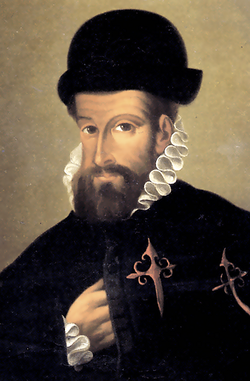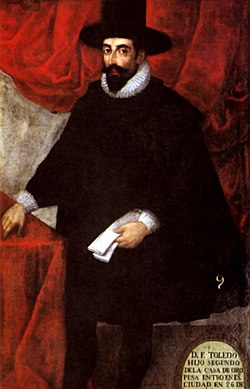Administration
The longevity of Spain's empire in South America can be explained partly by the successful administration of the colonies. At first, it was primarily interested in controlling the independent-minded conquistadors. Still, the main goal soon became maintaining the flow of revenue to the crown and collecting the tribute of goods and labor from the Indian population. To this end, Spain soon created an elaborate bureaucracy in the New World in which various institutions served as watchdogs over each other, and local officials had considerable autonomy. [4]
Upper Peru, at first a part of the Viceroyalty of Peru, was included in the new Viceroyalty of Río de la Plata (whose capital was Buenos Aires) when it was created in 1776. The viceroy was aided by the audiencia (council), which was simultaneously the highest court of appeal in the jurisdiction and, in the absence of the viceroy, also had administrative and executive powers.
The wealth of Upper Peru and its remoteness from Lima convinced the authorities in Lima to create an audiencia in the city of Chuquisaca (present-day Sucre) in 1558. Chuquisaca had become particularly important as Potosí's administrative and agricultural supply center. The jurisdiction of the audiencia, known as Audiencia of Charcas, initially covered a radius of 100 "leagues" (179,600 hectares) around Chuquisaca, but it soon included Santa Cruz and territory belonging to present-day Paraguay and, until 1568, also the entire district of Cuzco. The president of the audiencia had judicial authority and administrative and executive powers in the region, but only in routine matters; more critical decisions were made in Lima. This situation led to a competitive attitude and the reputation of Upper Peru for assertiveness, a condition reinforced by the economic importance of the region. [4]
Spain exercised its control of smaller administrative units in the colonies through royal officials, such as the corregidor , who represented the king in the municipal governments that their citizens elected. By the early 17th century there were four corregidores in Upper Peru. [4]
In the late 18th century, Spain undertook an administrative reform to increase the crown's revenues and eliminate many abuses. It created an intendancy system, giving extensive powers to highly qualified officials directly responsible to the king. In 1784, Spain established four intendancy districts in Upper Peru, covering the present-day departments of La Paz, Cochabamba, Potosí, and Chuquisaca. [4]
The Spanish crown initially controlled the local governments indirectly but centralized procedures as time passed. At first, Viceroy Francisco de Toledo confirmed the rights of local nobles and guaranteed them local autonomy. But the crown eventually came to employ Spanish officials, corregidores de indios , to collect tribute and taxes from the Indians. Corregidores de indios also imported goods and forced the Indians to buy them, a widely abused practice that proved to be an enormous source of wealth for these officials but caused much resentment among the Indian population. [4]
Situation of the Native peoples
The conquest and colonial rule were traumatic experiences for the Indians. Easily susceptible to European diseases, the native population decreased rapidly. The situation of the Indians worsened in the 18th century when Spain demanded higher tribute payments and increased mita obligations to increase the mining output. [4]
These profound economic and social changes and the breakup of native culture contributed to the increasing alcoholism. Before the Spanish arrived, the Incas had consumed alcohol only during religious ceremonies. Indian use of the coca leaf also increased, and, according to one chronicler, at the end of the 16th century, "in Potosí alone, the trade in coca amounts to over half a million pesos a year, for 95,000 baskets of it are consumed." [4]
Indian reaction to colonial rule and conversion to Christianity varied. Many Indians adapted to Spanish ways by breaking with their traditions and actively attempting to enter the market economy. They also used the courts to protect their interests, especially against new tribute assessments. Others clung to their customs as much as possible, and some rebelled against the white rulers.





